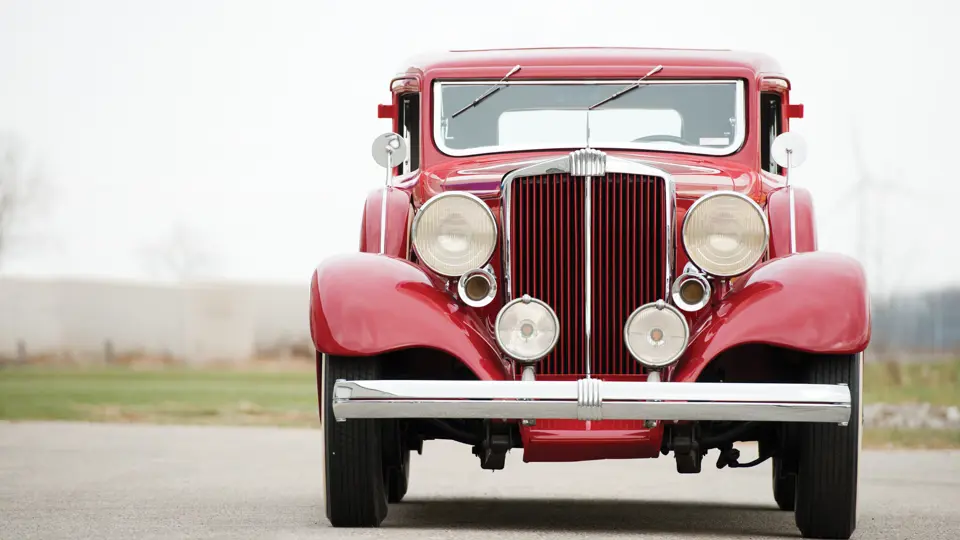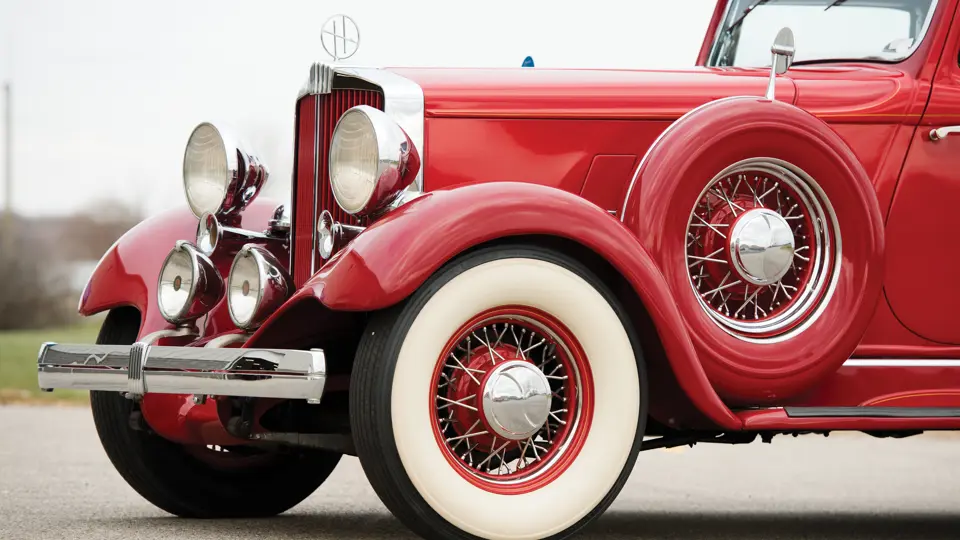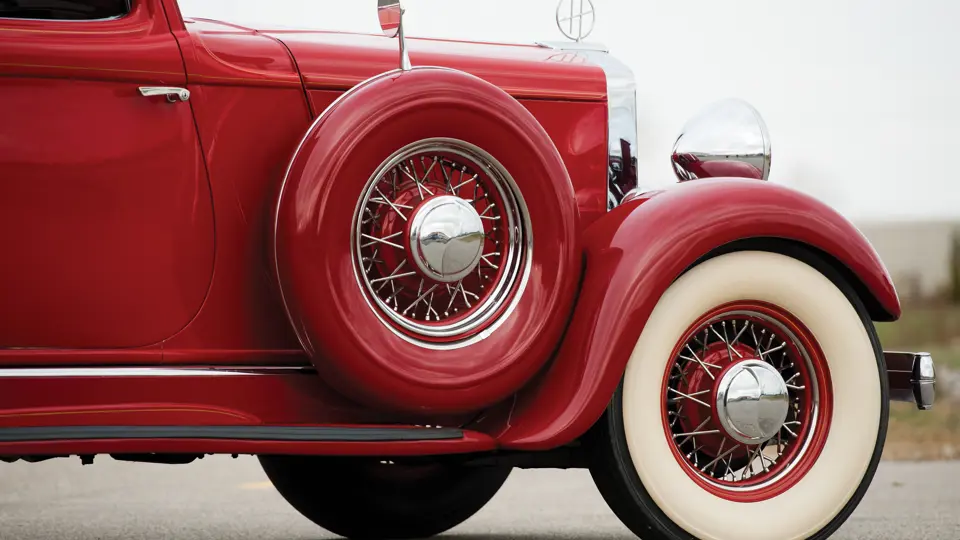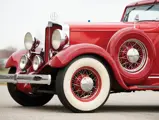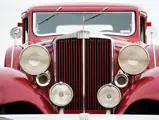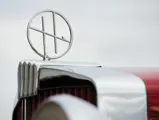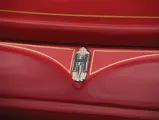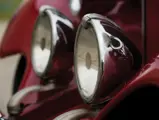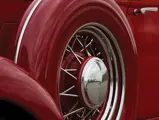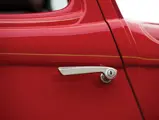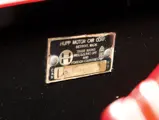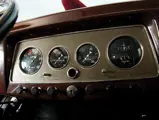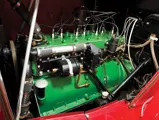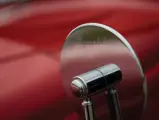
1932 Hupmobile I 226 Eight Coupe
{{lr.item.text}}
$99,000 USD | Sold
{{bidding.lot.reserveStatusFormatted}}
- A senior “cycle fender” Hupp; one of the great art deco automobiles
- The sole surviving example of this body style
- Formerly owned by Harrah’s Automobile Collection
- Accompanied by a significant documentation file
103 bhp, 279.9 cu. in. L-head inline eight-cylinder engine, three-speed manual transmission, solid front and floating rear axles with semi-elliptic leaf springs in the front and rear, and four-wheel mechanical drum brakes. Wheelbase: 126 in.
Independent Detroit manufacturer Hupp fought the Great Depression with all-new designs that had been penned by celebrated industrial designer Raymond Loewy. The cars were introduced in the Depression’s worst year, 1932, and featured cycle-style front fenders, which melded cohesively from the distinctive grille to the wide vee’d beltline molding to the sweeping flare of the rear fenders. Today, these automobiles, which have become extraordinarily rare over time, are considered among the most beautiful mid-priced automobiles of their era and masterpieces of art deco design.
The car offered here is an I 226 Coupe that is part of Hupp’s senior line, and it has a 103-brake horsepower, inline eight-cylinder engine and a “free-wheeling” transmission. According to historian Bill Digney’s breakdown of “cycle fender” Hupp body styles, which was published in Hupp Herald, Volume 2, Number 4 (1972/73), this is the only example of this body style in existence. It was formerly part of the renowned Harrah’s Automobile Collection, and while not restored by their shop, it was freshened by them for display in the collection’s halls. The car is recorded in several of the rosters that have been published by Harrah’s over the years.
A cosmetic restoration was performed in the mid-1990s, and during this time, the body was refinished in its present crimson and the interior was reupholstered in dark maroon leather. However, it is believed that the car’s body has never been off the frame, and it retains many original features and details, making it a very authentic example. The dash and instruments remain crisp and clear, while the underside and engine bay have been nicely restored and are of a high driver quality. Chrome-spoke wire wheels with red rims, wide whitewall tires, dual side-mounted spares with full metal covers and mirrors, dual horns, and Trippe driving lights round out a beautiful presentation on this Coupe, which records under 54,000 miles. The car is offered from long-term storage in a private collection, and it is recommended that it be mechanically inspected prior to use.
The Hupmobile is accompanied by a significant file of documentation, including back issues of the Hupp Herald newsletter, a bound reprint of the 1932 eight-cylinder Hupmobile instruction manual, laminated original advertisements, and an album of photographs and period articles on the model.

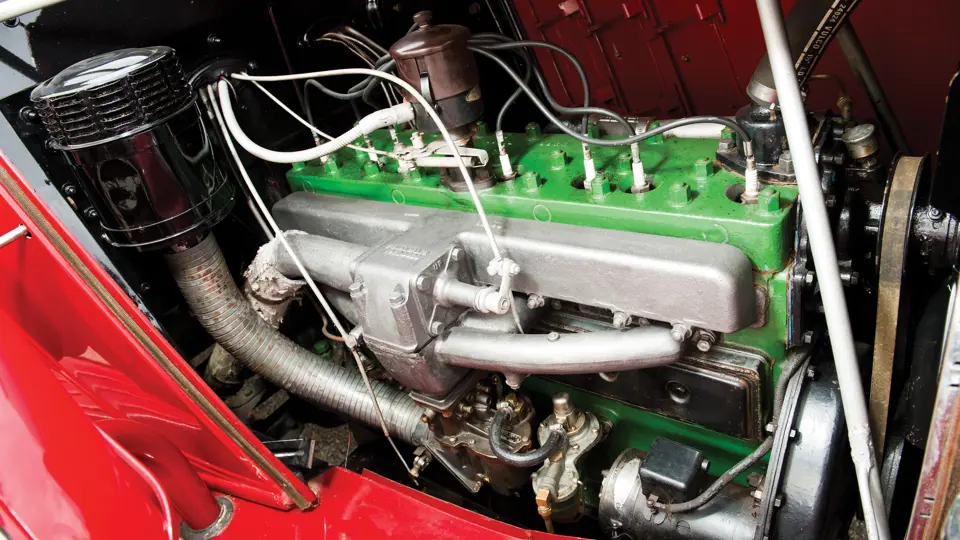


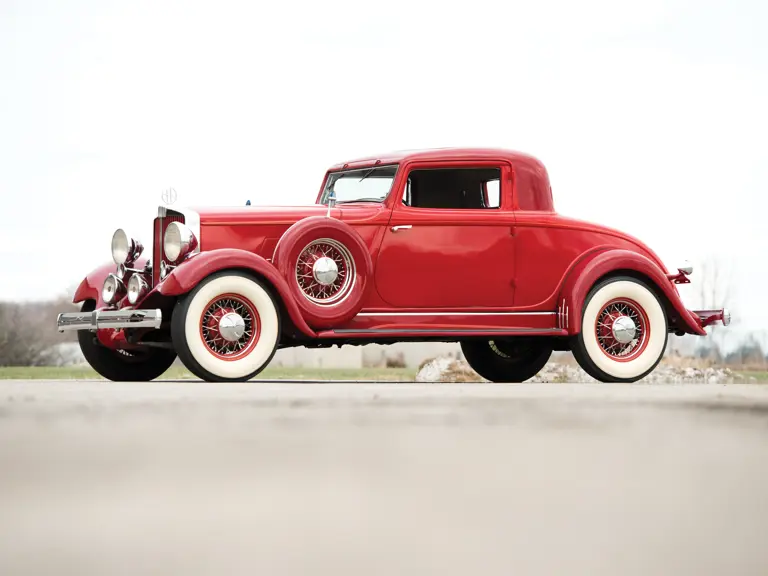

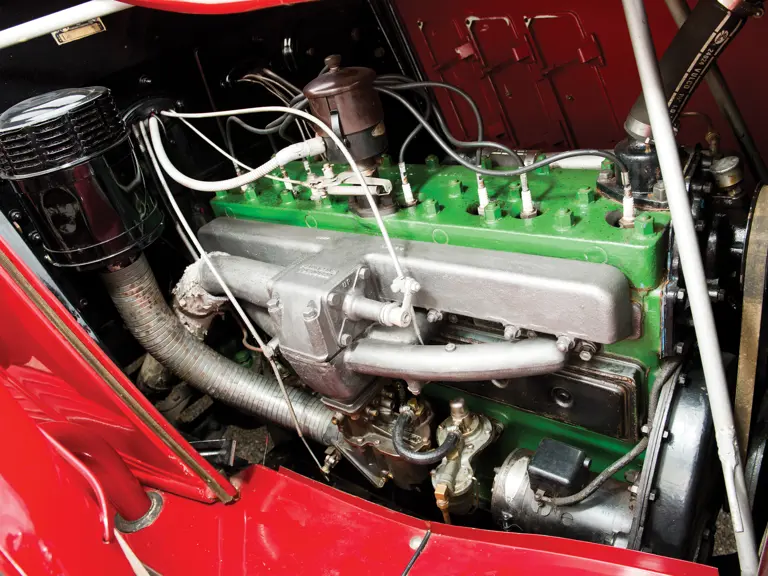
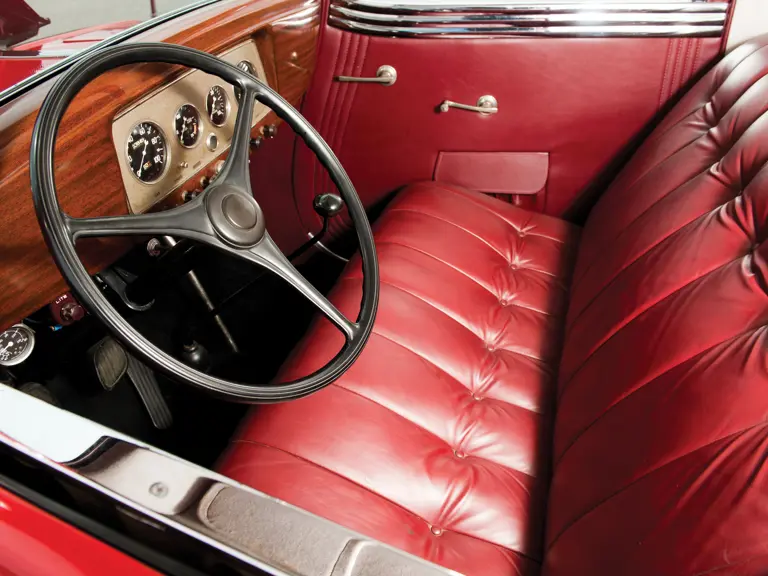
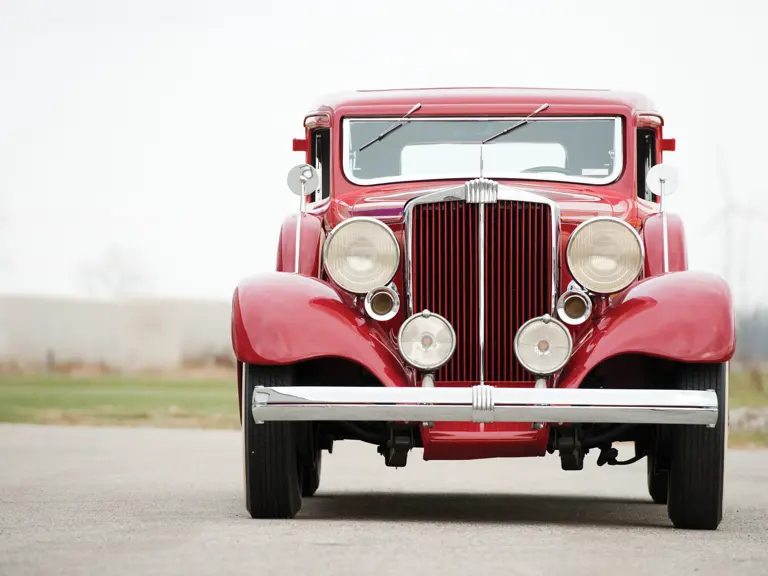
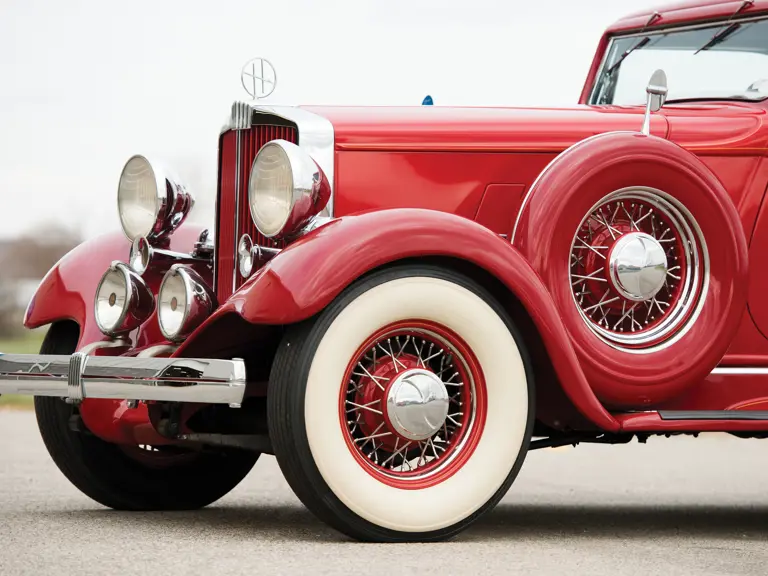
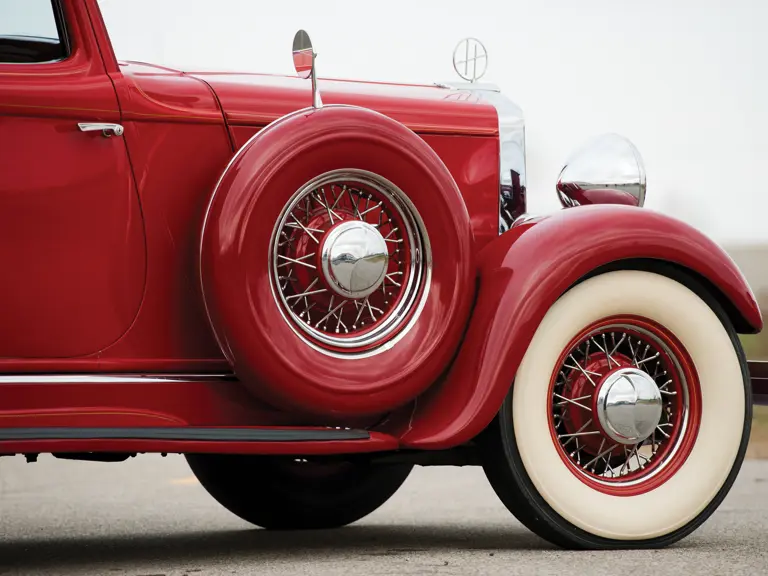
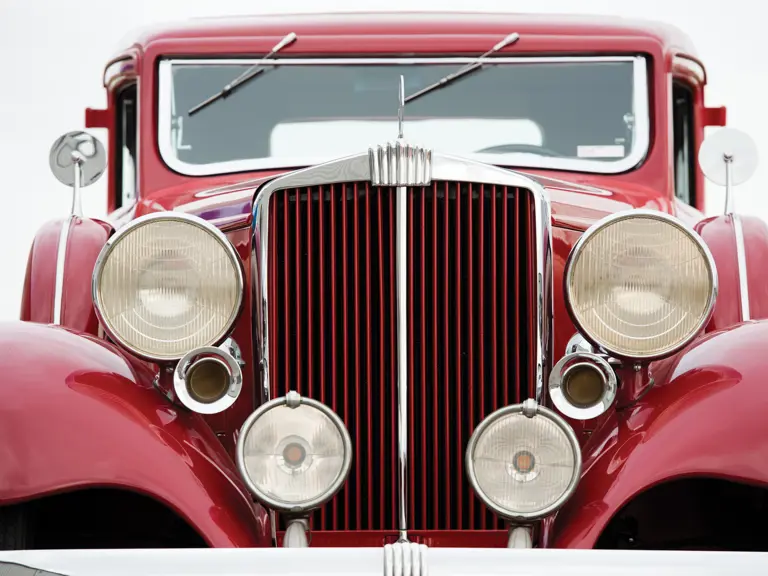
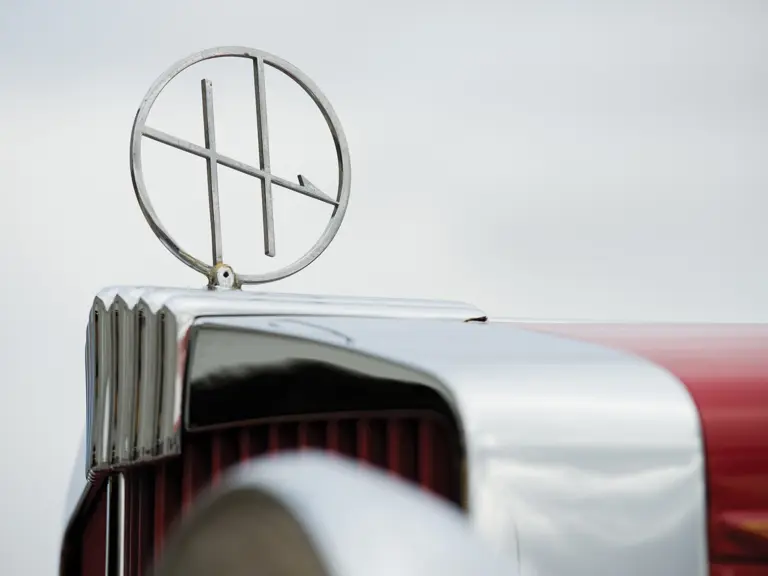


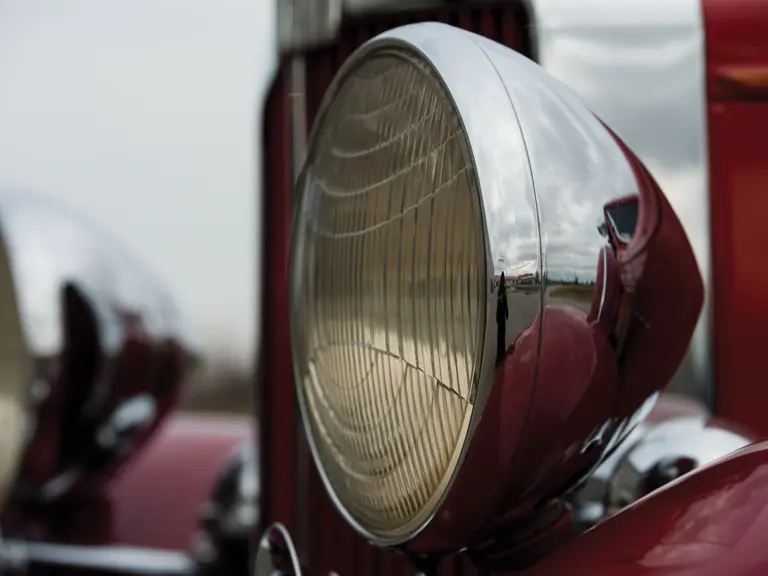
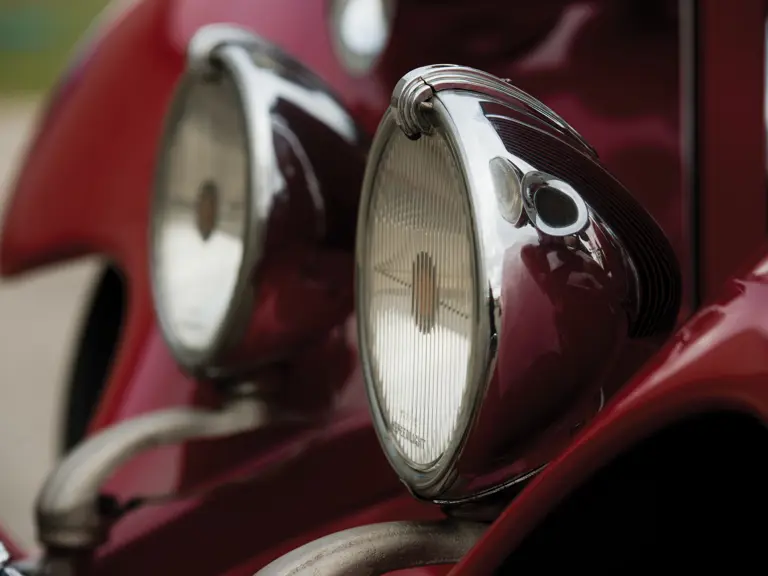

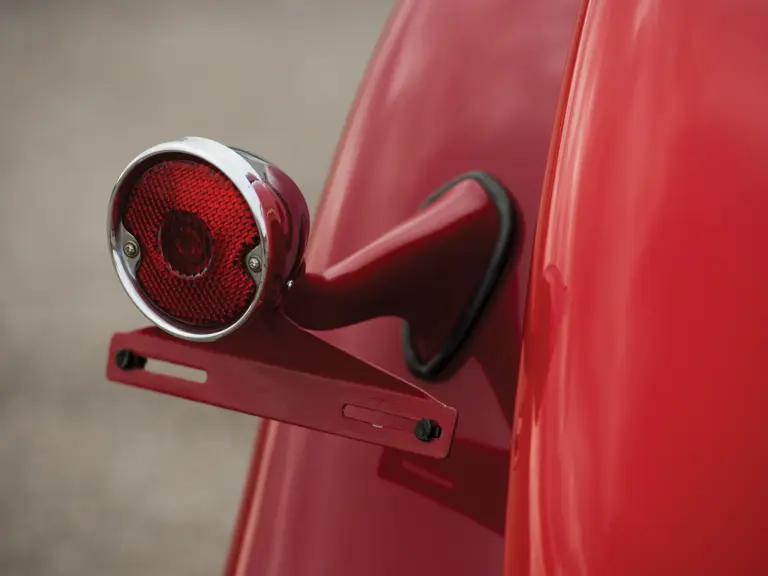
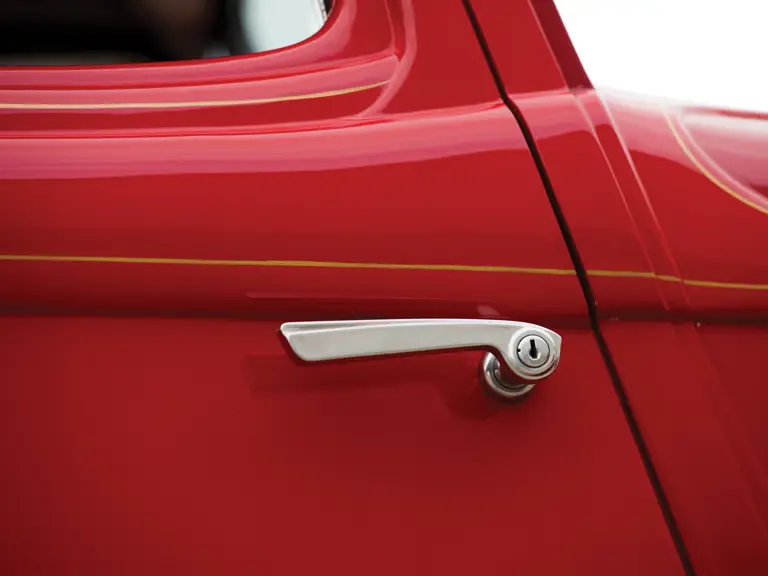

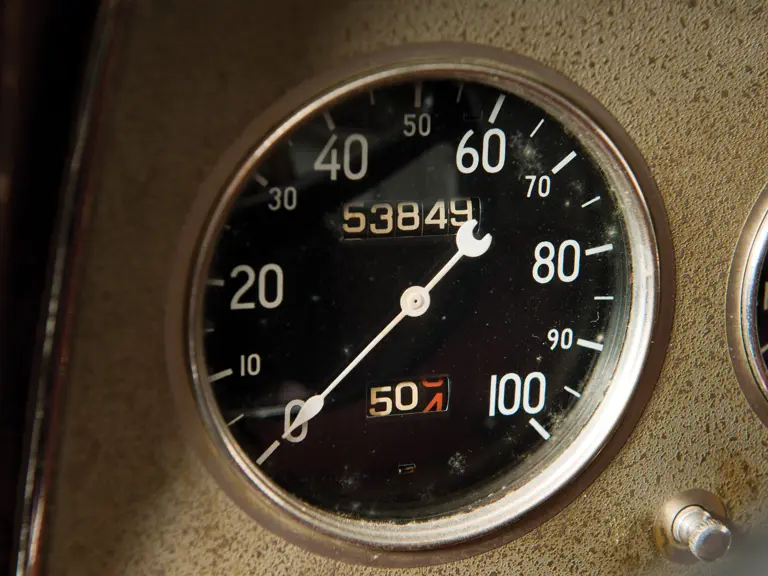


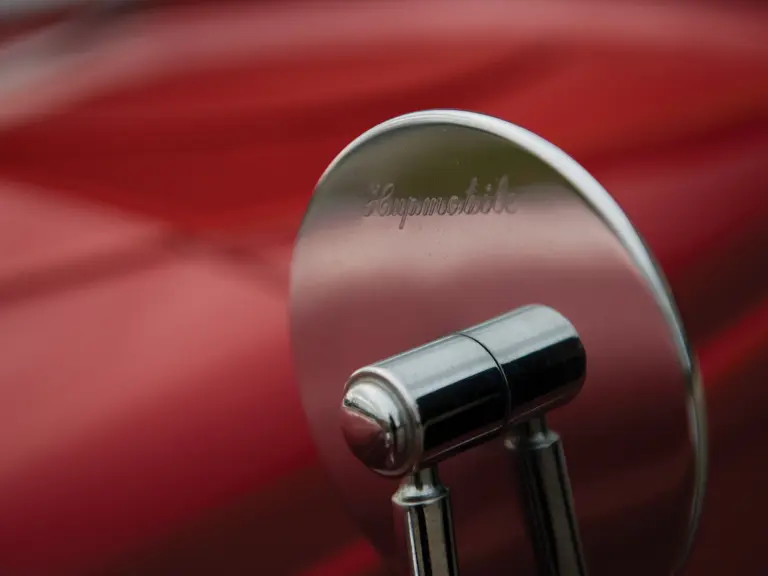
 | Phoenix, Arizona
| Phoenix, Arizona
